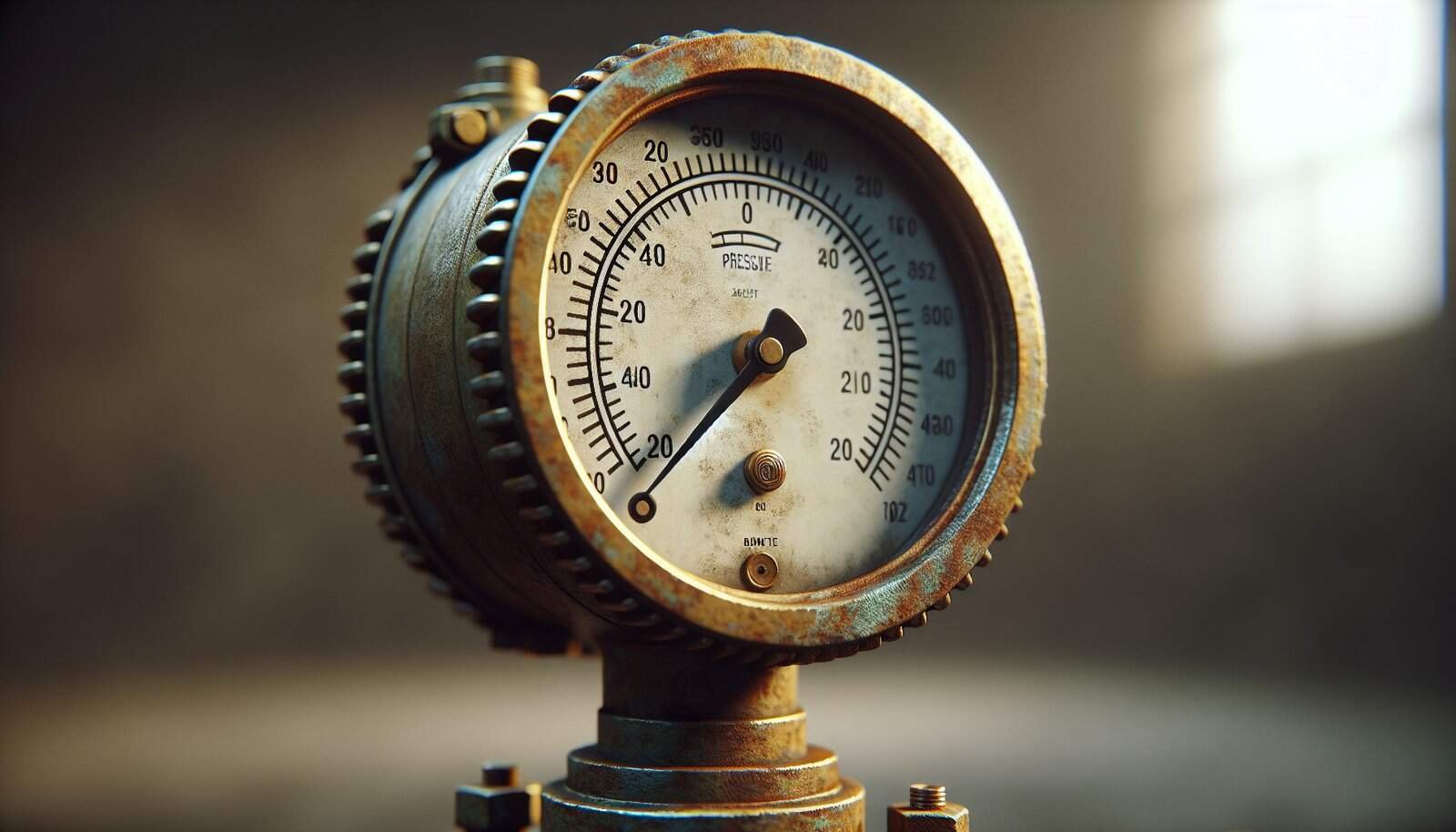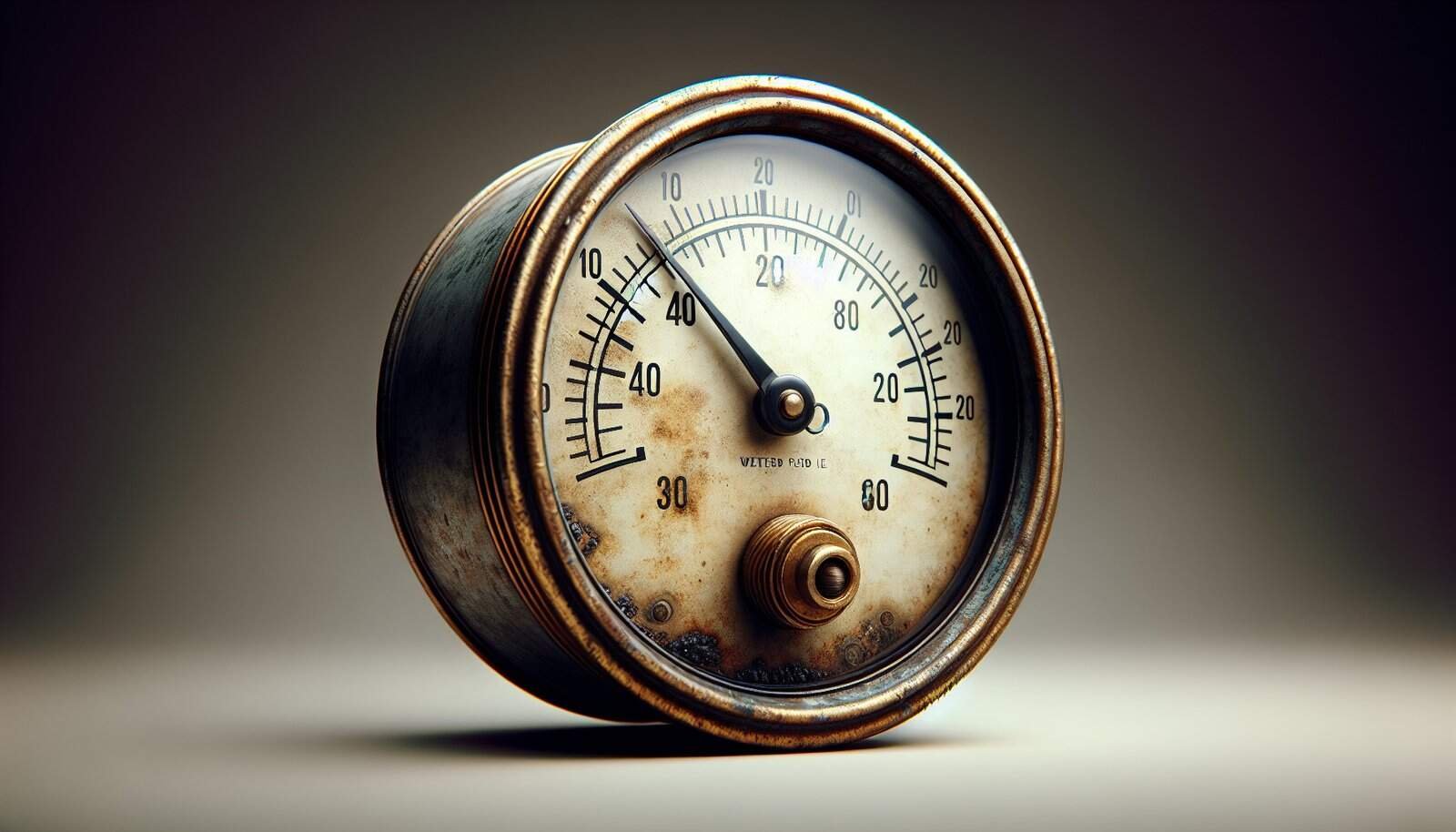Are you noticing weak flow from your taps or showers and wondering why your well isn’t delivering the water pressure you expect?
What Are The Common Causes Of Low Water Pressure In Wells?
You rely on your well to supply consistent water pressure for daily tasks, and when that pressure drops it can disrupt your routine. Below, you’ll find detailed explanations of the most common causes of low water pressure in wells and practical guidance on diagnosing, fixing, and preventing these problems.
How a Typical Residential Well System Works
Understanding the main components of your well system will help you pinpoint where pressure losses occur. A typical residential well system includes the well bore, pump (submersible or jet), pressure tank, pressure switch or controller, piping, and household plumbing.
Why Low Pressure Happens
Low water pressure can result from mechanical failure, system setup issues, plumbing restrictions, or changes in aquifer performance. You’ll often need to check several parts of the system to determine the true cause because symptoms can overlap.
Common Causes of Low Water Pressure
You’ll find that many causes are straightforward to recognize and fix, while others need professional attention. Below is a list of frequent causes with simple explanations and what they usually indicate.
Partially Closed or Clogged Shutoff Valves
If a valve is only partially open, your system will be restricted and pressure will drop. Valves can be accidentally adjusted during maintenance or become stuck from corrosion or sediment.
Clogged or Corroded Pipes
Scale, mineral deposits, or sediment can narrow pipe bores and reduce flow. Older galvanized pipes are prone to internal corrosion which progressively lowers water pressure and flow rate.
Faulty Pressure Tank or Bladder
Pressure tanks smooth pump cycling and maintain steady pressure. A failed bladder, waterlogging, or incorrect pre-charge can cause rapid pump cycling or low steady pressure.
Malfunctioning Pressure Switch or Controller
The pressure switch tells your pump when to turn on and off based on tank pressure. If the switch is worn, misadjusted, or corroded, the pump may not reach the correct cut-in/cut-out pressures, leading to perceived low pressure.
Worn or Failing Pump
Over time, pump impellers, seals, and motors wear out, reducing pump efficiency and output. You may hear unusual noises or notice decreased flow even when the pump runs continuously.
Partially Clogged Well Screen or Intake
Sediment, iron bacteria, or mineral precipitates can block the well screen or intake. This reduces the water available to the pump and causes pressure to fall, particularly under higher demand.
Low Water Table or Seasonal Fluctuations
The depth of usable water in the well can drop seasonally or over years due to drought or changes in the aquifer. Lower water levels reduce the pump’s capacity and can cause intermittent low pressure.
Air in the System
Air trapped in lines or a waterlogged tank can cause sputtering taps and inconsistent pressure. Air problems often follow recent repairs, pump changes, or tank failures.
Pressure Reducing Valve (PRV) Issues
If your home has a PRV to limit incoming pressure to household plumbing, it can fail or be set too low. A stuck or misadjusted PRV will limit pressure regardless of pump capacity.
Leaks in Plumbing or Well Piping
Undetected leaks upstream of fixtures (including buried well piping) reduce available pressure and water volume. Leaks can be subtle and cause gradual reductions that are harder to diagnose.
Electrical Problems
Inconsistent voltage, a failing motor capacitor, or wiring faults can cause the pump to run weakly or intermittently. Electrical issues may present as a pump that tries to start but cannot maintain proper operation.

Diagnosing Low Water Pressure
Good diagnosis saves time and money by guiding you to the likely problem area. You’ll want to check simple items first, then move to more complex tests.
Initial Checks You Can Do Yourself
Start by testing water at multiple fixtures, checking exterior faucets, and noting whether the low pressure is throughout the house or localized. Check the pressure gauge at the pressure tank, and listen to your pump’s behavior during a drawdown.
Using a Pressure Gauge
A pressure gauge mounted on the plumbing or added temporarily lets you see cut-in and cut-out pressures. Compare readings to your pressure switch settings to see if the pump reaches the expected pressure before shutting off.
Observing Pump Cycling
Rapid on/off cycling suggests a waterlogged tank or leak. Long runs without reaching cut-out pressure often imply pump or intake problems. Keep a log of cycle timing and pump run durations to aid diagnosis.
Flow Rate Test
Measure flow in gallons per minute (GPM) by timing how long it takes to fill a known container (like a 5-gallon bucket). Compare results to expected pump output for your well. Low flow suggests pump or intake problems, or a drop in water level.
Inspecting the Pressure Tank
Tap the tank or use a tire gauge to check pre-charge air pressure (tank must be isolated from system). An incorrect pre-charge (generally 2 psi below the pump cut-in pressure) indicates bladder or air level issues.
Checking Electrical Supply
Verify voltage at the pump starter or control panel and listen for humming or abnormal sounds. Weak voltage or electrical faults may cause underperformance or pump damage.
When to Call a Professional
If you’re uncomfortable with well equipment, or your tests point to a submersible pump failure, well screen blockage, or a deep-water issue, contact a licensed well contractor. Professionals can pull the pump, perform camera inspections, and test aquifer performance.
Fixes and Remedies for Low Water Pressure
Once you’ve identified the likely cause, choose the appropriate remedy. Some fixes are simple and inexpensive; others require parts, specialized tools, or professional service.
Opening Valves and Clearing Obstructions
Make sure all valves on the well and household plumbing are fully open. If there’s an inline strainer or filter, clean or replace it as needed. These quick fixes are often the solution for sudden pressure drops after maintenance.
Cleaning or Replacing Restrictive Piping
If mineral scale or corrosion is restricting pipes, you may need to flush, descale, reline, or replace sections of piping. For whole-house issues with old galvanized lines, consider repiping with copper, PEX, or PVC.
Repairing or Replacing the Pressure Tank
If the tank is waterlogged or the bladder has failed, replace the tank or bladder assembly. It’s often cost-effective to replace aging tanks rather than attempt repairs, and a properly sized tank reduces pump wear.
Resetting or Replacing the Pressure Switch
If the switch is corroded or misadjusted, cleaning or replacing it and verifying cut-in/cut-out settings can restore normal pressure. Ensure you follow electrical safety practices or hire a professional.
Replacing or Rebuilding the Pump
For worn pumps, replacement is common. If the pump is relatively new, rebuilding can be an option depending on cost. Choose a pump sized correctly for your well depth and expected demand.
Well Rehabilitation and Screen Cleaning
A well can be rehabilitated by methods such as airlifting, developing, surging, and chemical or mechanical cleaning to remove mineral and biological fouling. In severe cases, professional hydrofracturing (hydro-frac) may improve production by opening fractures in rock aquifers.
Adjusting or Replacing a PRV
If a PRV is set too low or is faulty, adjusting the setpoint or replacing the valve will restore expected pressure. Ensure the PRV is compatible with your system pressures.
Fixing Leaks
Locate leaks using pressure tests and visual inspection. Repair or replace damaged piping, joints, or fittings promptly to prevent further pressure loss and water waste.
Addressing Electrical Issues
Correct electrical problems by hiring a licensed electrician or pump technician. Upgrading wiring, replacing capacitors or starters, and ensuring correct voltage improve pump performance and longevity.

Preventive Maintenance to Keep Pressure Stable
Routine maintenance reduces the chance of sudden pressure loss and extends the life of your well system. You’ll want a simple schedule of checks and seasonal inspections.
Regular System Inspections
Check the pressure gauge, listen to pump cycling, and monitor flow rates at least quarterly. Seasonal inspections before summer or winter help catch problems tied to demand changes or freeze risk.
Pressure Tank and Switch Service
Verify tank pre-charge annually and inspect the pressure switch for debris and corrosion. Replace the switch or tank as they age; typical lifespans vary but many switches fail in under 10 years.
Water Quality Testing
Test your well water annually for contaminants and chemistry that can cause scaling or bacterial growth. Hard water and high iron/sulfur levels contribute to pump and pipe problems over time.
Filter and Sediment Trap Maintenance
Change cartridge filters, clean sediment traps, and service whole-house filters as recommended. Clogged filters can significantly reduce flow and pressure with minimal notice.
Keeping Records
Maintain a service log with dates of repairs, parts replaced, and water level or yield measurements. These records help professionals diagnose issues faster if new problems arise.
Cost Considerations
Understanding typical costs helps you decide whether to attempt DIY fixes or hire professionals. Costs vary regionally and by the complexity of the repair.
Common Cost Ranges
- Pressure switch replacement: relatively low cost, often $100–$300 including parts and labor.
- Pressure tank replacement: $300–$1,200 depending on tank type and size.
- Pump replacement (submersible): $800–$3,000+ depending on depth and pump capacity.
- Well rehabilitation: $500–$5,000+ depending on methods and severity.
- Re-piping a house: $1,000–$10,000+ depending on materials and house size.
When Cost Becomes a Bigger Decision
If your well yield is declining seriously or repairs are repeatedly needed, assess long-term solutions like deeper wells, additional storage, or alternative supply sources. You’ll want to weigh repair costs against expected service life and future demand.

When to Replace vs. Repair
Deciding whether to repair or replace depends on age, condition, and expected performance. If a pump is old and repair costs approach replacement, replacement is usually smarter. For tanks and switches, replacement is often easier and more reliable than repeated repairs.
Signs Replacement Is the Best Option
Frequent breakdowns, repeated low yields after rehabilitation, or damaged well casing and screens often point to replacement. If your water needs have grown (e.g., adding a bathroom), upgrading system capacity can be more cost-effective long-term.
What to Expect from a Professional Well Contractor
When you call a pro, you can expect inspections, pump pulling if necessary, well yield testing, and recommendations for repairs or upgrades. Choose a licensed contractor with good references and local well experience.
Questions to Ask a Contractor
Ask about licensing, insurance, warranties, expected timelines, and a written estimate with line-item costs. Also ask about methods used for well testing and rehabilitation so you’re informed about intrusive procedures.

New Technologies for Residential Wells
Modern technologies can improve performance, monitoring, and energy efficiency of residential well systems. You’ll find that many advancements reduce guesswork and give you remote control over your water system.
Variable Frequency Drives (VFDs) and Variable Speed Pumps
VFDs control pump motor speed to match demand, reducing short cycling and improving energy efficiency. Variable speed pumps provide smoother pressure, reduced wear on components, and can increase system longevity.
Smart Pressure Tanks and Electronic Controllers
Electronic pressure controllers replace mechanical switches and offer precise pressure control, better diagnostics, and fewer mechanical failures. Smart tanks and controllers let you set custom pressure ranges and view system health data.
Remote Monitoring and IoT Sensors
Sensors for pressure, flow, pump runtime, and water level can report data to your smartphone or cloud service. Remote monitoring alerts you to problems early, lets professionals diagnose issues remotely, and tracks long-term trends in aquifer performance.
High-Efficiency and Multi-Stage Submersible Pumps
Newer pump designs are more efficient across a wider range of flow rates, improving output while consuming less energy. Multi-stage designs boost pressure without oversizing the motor, which is especially helpful for deep wells.
Solar-Powered Well Pumps
Solar pumping systems reduce dependence on grid power and offer reliable operation in remote areas or during outages. Modern solar pump systems paired with batteries or smart controllers can operate automatically and maintain consistent pressure.
Improved Well Rehabilitation Techniques
Hydraulic fracturing (hydro-frac) and modern surge cleaning techniques can enhance yields in rock wells. Chemical and biological treatments are more targeted now, addressing specific fouling agents like iron bacteria more effectively.
Advanced Water Treatment and Filtration
Compact, cartridge-based systems and smart filters manage sediment, iron, and hardness with less pressure loss than older filter types. Some systems automatically backwash or regenerate to maintain flow while keeping contaminants out.
Integrated Pump and Tank Systems
Pre-packaged systems where pump, tank, and controller are designed as a matched system simplify installation and optimize performance. These systems reduce mismatches that often cause pressure issues.
Battery Backup and Hybrid Systems
Hybrid systems that combine solar, battery storage, and grid connection keep pumps operational during outages and can smooth demand on the pump motor. Lithium-ion battery banks have made compact backup more viable for residential wells.
Smart Load Management
Load management systems coordinate well pump operation with household usage and other systems (like rainwater harvesting or storage tanks). These systems can prioritize critical uses and preserve well longevity during dry spells.
Comparison of New Technologies
Use this table to compare advantages and typical considerations when choosing modern well technologies.
| Technology | Main Benefits | Considerations |
|---|---|---|
| VFD / Variable Speed Pump | Energy savings, smoother pressure, less cycling | Higher initial cost, needs proper setup |
| Electronic Controllers | Precise control, diagnostics, longer life | Requires electrical expertise to install |
| Remote Monitoring / IoT | Early alerts, remote diagnostics, trend data | Subscription costs, connectivity needs |
| High-Efficiency Submersible Pumps | Improved flow and pressure per watt | May require pump pull for upgrade |
| Solar Pumping + Battery | Off-grid operation, lower energy cost | Higher upfront cost, needs sizing for demand |
| Well Rehabilitation Tech (hydro-frac) | Can restore/boost yield without drilling | Not effective for all aquifer types |
| Smart Filtration Systems | Lower pressure loss, automated maintenance | Filter replacements and periodic service |
| Integrated Pump/Tank Systems | Simplified installation, matched performance | Limited customization for unique wells |

How to Choose the Right Technology for Your Well
Selection depends on your well’s depth, yield, water quality, power availability, and budget. You’ll want diagnostics first—monitoring data or a contractor’s assessment—to decide whether efficiency upgrades, rehabilitation, or replacement makes sense.
Matching Technology to Your Goal
If your goal is consistent pressure and energy savings, VFDs and efficient pumps are good choices. If your well yield is marginal, rehabilitation or storage tanks may be the best route. For remote or off-grid needs, solar and battery solutions are most suitable.
Financing and Incentives
Some energy-efficient upgrades (e.g., solar pumps, high-efficiency motors) may qualify for rebates or incentives. Check local programs and utility incentives before making a major purchase.
Practical Steps You Can Take Today
You don’t need to replace major parts immediately. Start with simple steps you can perform or arrange quickly.
- Check and open shutoff valves fully and inspect faucets for localized restrictions.
- Measure flow rates and note whether the problem is whole-house or at select fixtures.
- Inspect filters and replace cartridges as needed.
- Record pressure gauge readings and pump cycling times to share with a contractor.
- Test water quality for iron, hardness, and bacteria if you notice scaling or odors.
When to Upgrade to New Technology
If you’re repeatedly replacing components, experiencing frequent low-pressure events, or want to reduce energy costs and gain remote monitoring, consider investing in modern systems. Upgrades are particularly effective if you plan to stay in the home long-term.
Final Thoughts
You deserve a reliable water supply that meets your household needs. Low water pressure can have many causes, but with systematic diagnosis and targeted fixes—ranging from simple valve adjustments to advanced pump upgrades—you can restore consistent pressure and prevent future problems. Modern technologies offer improved efficiency, monitoring, and performance; choosing the right solution depends on your well’s condition and your goals.
Quick Checklist Before Calling a Pro
- Is low pressure whole-house or localized?
- Have you checked common valves, filters, and fixtures?
- What are your pressure gauge readings and pump cycling behavior?
- Have you recently changed any components (pump, tank, plumbing)?
- Do you have measurable drops in well water level or seasonal yield issues?
Keeping answers to these questions ready will speed up diagnostics and help your contractor recommend the best solution.
Frequently Asked Questions
You’ll often have similar questions when troubleshooting low pressure. Below are concise answers to common concerns.
Why does my pump run but pressure stays low? Often the pump can’t reach cut-out pressure due to worn pump components, low yield, clogged intake, or a failing pressure tank.
Can a pressure tank cause low pressure without showing waterlogging? Yes. A damaged bladder or incorrect pre-charge can cause symptoms even if waterlogging isn’t obvious.
Is low pressure after a power outage normal? It can be due to air trapped in the lines, a waterlogged tank, or a pressure switch issue triggered by the outage.
How long does a typical submersible pump last? Properly maintained pumps may last 10–15 years, but lifespan depends on run-time, water quality, and installation conditions.
Does installing a bigger pump always fix low pressure? No. If the bottleneck is a clogged intake, low yield, or restrictive piping, a larger pump may not help and could cause other issues.
If you want, you can provide your well depth, pump type, recent symptoms, and pressure readings and I’ll help you interpret them and suggest next steps.
